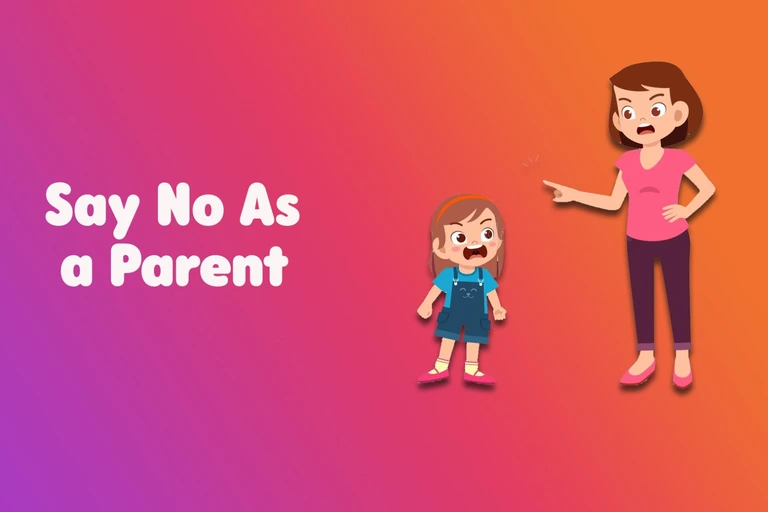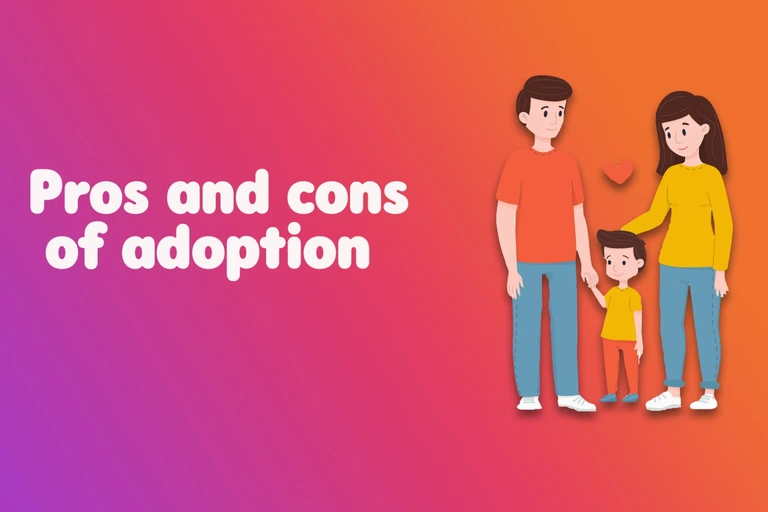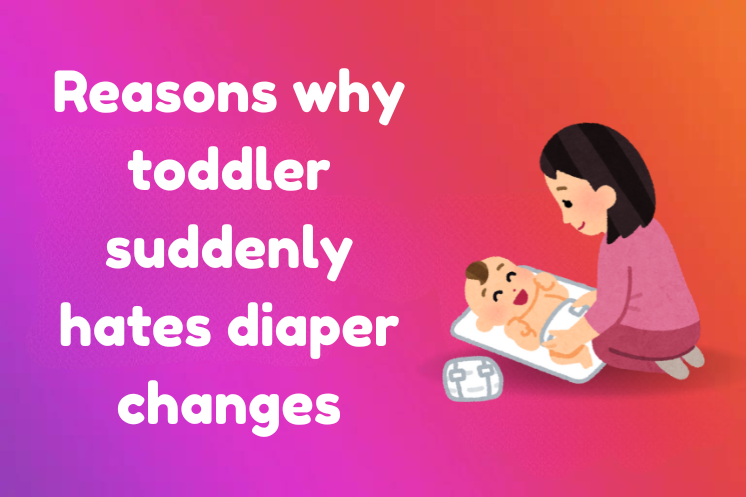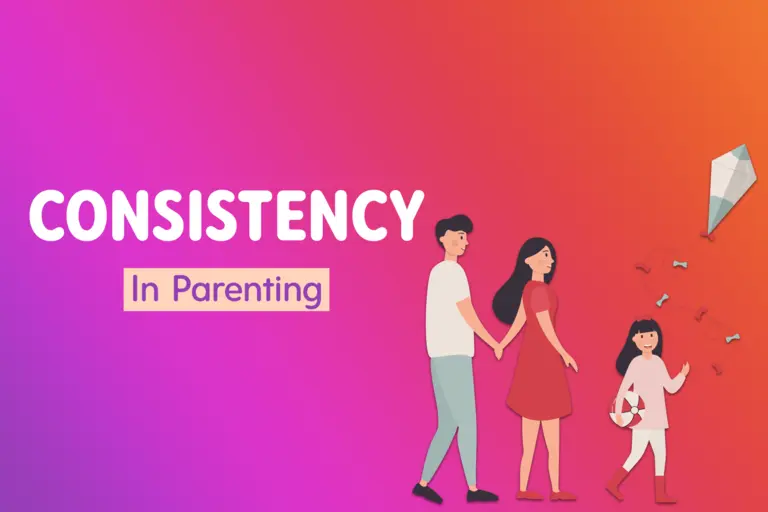Nine techniques to Say No as parents
Learn nine positive techniques for saying no as parents. Discover how to set clear boundaries, maintain respect, and communicate healthyly with your children.
Here, we will analyze doable tactics for refusing your children without using the word “no” too much.
We will cover everything to assist you in negotiating this crucial part of parenting, whether through positive reinforcement, setting limits appropriately, or redirecting your behavior.
Known as one of the most challenging tasks in parenting, it’s learning how to say no as parents to your children correctly. As parents, we realize how vital it is to establish boundaries and give them discipline.
Here we go with actionable strategies to deny your child without using the big “no” as much as you need to. Everything will be covered here to help you find your way through this challenging part of parenting, whether through positive reinforcement, proper limits, or redirection.
Benefits of Saying No as Parents
As a parent, it is never easy to say no. It’s much more convenient to say no to avoid arguing or even tantrums over a sure thing, which should not be so for children.
We teach the child self-discipline and respect by setting boundaries and standing our ground. The more we use positive parenting techniques instead of always saying yes, the more we teach children to set limits for themselves.
When we say no to our children, we tell them that they will grow with good discipline, and sometimes it is perfectly fine to say no.
By saying no as a parent, we give them the feeling of security, help them realize the importance of respect in other people’s lives, and set boundaries. Next time your child asks for something, don’t be afraid to say no and let your child learn their limits.
What other strategies can I use besides saying no to my children?
In preference to a strict rule, like no to your toddler, you can guide behavior through the use of redirection techniques. For instance, if he’s trying to play with something you don’t want him to touch, you hand him another toy or get him into another activity instead.
Healthy boundaries will help your child learn respect for the people in positions of authority. Being a stand-out, consistent and firm about what you expect from your child will ensure that they know exactly what is and isn’t okay.
You can stand strong while enforcing rules, but you can use positive language. Do not constantly say “no,” instead, “Let’s do it this way,” or “How about doing it that way?”
Try to praise and encourage good behavior rather than constantly pointing out what they are doing wrong. You could focus on the behavior you want more of with your child.
Positive Communication
Positive Communication is essential when it comes to parenting style. Instead of constantly using the two-letter word “no,” parents find that it’s far more effective to say something like “not right now” or “not at this time.”
When we say no as parents what we want them to do rather than just what we don’t want them to do, they learn to deal with emphatic positive interaction.
This method also helps the child know what to expect in certain situations, which can lead to valuable lessons needing to be addressed.
When the child feels sad or wants something, please remember that they are only two years old. It’s easier to give in to their demands, but in the long run, this works because kids are young and can easily get used to being told “no” all the time.
By Positive Communication, think things through; please read the situation and address it calmly and kindly. This approach can also reduce unkind behaviors in the child and promote a happy face and positive environment at home.
Offering Explanations
Regulated explanation: When training the child, you should offer alternatives to constantly repeating “no.” If you do not want your child to enter a room, instead of saying “no,” use phrases like “Let’s take a walk” or “Please keep reading.”
This way, you avoid the word “no,” and you can engage your children positively. Do not punish, and always say “no.” Try to find a way to say “yes” or offer alternatives to negative commands. “please” and “let’s” can unite you with your children.
Children quickly get frustrated and fight back against your demands when all they hear them say is, “Say no as parents.” Instead of saying “no,” try using phrases such as “stop” or “you don’t have to do that.” Offering choices with “no” may avoid conflict and negativity with your children.
It is a powerful tool for guiding behavior and creating a positive environment. By saying “yes” instead of constantly using “no,” we can keep kids engaged and motivated.
Alternatives to “no,” such as “please” or “let’s,” can help redirect behavior more positively. When we focus on what children are doing well and offer praise or rewards, they are likelier to continue that behavior. Avoiding the word “no” also helps build a relationship based on trust and cooperation.
Additionally, by saying “yes” instead of “you don’t” or “can’t,” we are encouraging a growth mindset and teaching kids that they are capable of achieving their goals.
So, let’s keep reading and exploring positive reinforcement to nurture and support the development of our children.
Offering Choices
Providing options entails giving kids agency by letting them choose within set parameters. It honors their choices and interests while promoting independence and autonomy. Parents recognize their child’s agency and encourage accountability for their actions by giving them options. Children who feel appreciated and heard during the decision-making process are less likely to oppose and are more likely to cooperate. It develops vital life skills like problem-solving and critical thinking. Ultimately, “say no as parents” fosters healthy development by strengthening the parent-child bond, promoting trust, and providing a nurturing atmosphere.v
Redirection
A parenting strategy known as “say no as parents” aims to control a child’s behavior by directing their attention or actions toward better options. Parents offer alternate activities or guidance instead of saying “no” to unwanted conduct to refocus their child’s attention constructively.
It respects children’s innate interest and enthusiasm while gently guiding them away from activities that could be dangerous or disruptive.
Parents may help youngsters learn self-regulation and how to make better decisions while fostering a loving and supportive atmosphere by offering redirection.
This method promotes cooperation, Communication, and problem-solving in the parent-child interaction.
Modeling Behavior
Demonstrating conduct refers to parents modeling ideal behaviors and attitudes for their kids to see and follow. Parental behaviors, such as compassion, patience, and respect, set a concrete example for their children.
This method strongly emphasizes the need for parents to say no as parents act and speak consistently because kids pick up skills through imitation and observation.
Parents help children develop social skills and important values by setting a good example. They also help to fortify the link between parents and children by fostering mutual respect and understanding.
Consistency
In parenting, “consistency” relates to how important it is to implement expectations, guidelines, and sanctions over time consistently. Regardless of the scenario or feelings, it is remaining consistent in how you react to people and events.
Children benefit from consistency because it gives them stability and predictability, making it easier to comprehend limits and expectations. Children develop a sense of security and comprehension when parents consistently say no as parents approach them and teach them to trust the norms and regulations established by their caregivers. Consistency also helps children internalize beliefs and actions and emphasizes accountability, which promotes healthy growth and positive connections within the family dynamic.
Using Distraction
Parenting strategies like “Employing Diversion aim to provide a substitute focus for a child’s attention, thereby deflecting it from unwanted actions or circumstances. Parents can use distractions, like presenting a toy, proposing an alternative activity, or starting a conversation with their child when dealing with challenging behavior or emotions. This method uses children’s innate curiosity and short attention spans to refocus their attention constructively. By saying no as parents offering diversions, parents support their children’s emotional regulation, prevent power clashes, and teach them constructive coping mechanisms for boredom or irritation. All of these factors contribute to a positive and harmonious parent-child dynamic.
Stay Powerful
It highlights how crucial it is for parents to keep control and authority in the parent-child relationship. It implies that to guide and discipline their children effectively, parents must boldly establish themselves. This method strongly emphasizes setting limits, upholding regulations, and making choices for the child’s growth and well-being. “Staying Powerful” refers to a balanced strategy that blends saying no as parents with compassion and understanding rather than submission or authoritarianism. It encourages parents to take the initiative to resolve issues and disputes and to create a safe, caring atmosphere for their kids’ development.
No’s grow as well
It implies that as children grow physically, emotionally, and mentally, so does their understanding of boundaries and standards. At first, kids could push back against or contest boundaries that their parents set, which could result in their hearing the word “no” a lot. Nonetheless, children eventually grow to respect these boundaries through regular guidance and positive reinforcement, which lowers the likelihood of conflicts and rebellion. Ultimately, the expression represents how parents and children change and grow due to the child’s learning to navigate the outside world.
Be Funny While Saying No
Using comedy to ease tension and lessen the impact to say no as parents rejection helps kids accept and comprehend boundaries. Parents can maintain firmness in their decisions and expectations while strengthening the parent-child link, encouraging cooperation, and creating a positive atmosphere by incorporating humour into disciplinary encounters. Ultimately, it promotes a sensible and successful parenting approach that places an equal emphasis on joy and discipline in the parent-child bond.
Have a ‘Yes’ day
“Have a ‘Yes’ Day” encourages parents to set aside a day to honor their children’s requests—as long as they are reasonable. It offers a change from the typical approach of setting limits and imposing regulations, giving kids greater freedom to follow their interests and wants. This method encourages creativity and passion, allowing kids to express themselves and enjoy activities. Say no as parents offers a change of pace, promoting positivity and creativity and building the relationship between parents and children while repeating respect and trust.
Wrap up
Finally, you don’t have to fight with your child whenever you say no as parents. You may impart helpful knowledge to children while still in a caring and supporting relationship by comprehending their behavior, establishing appropriate boundaries, and employing positive reinforcement. For extra advice on constructive discipline techniques and healthy parenting, continue reading.







